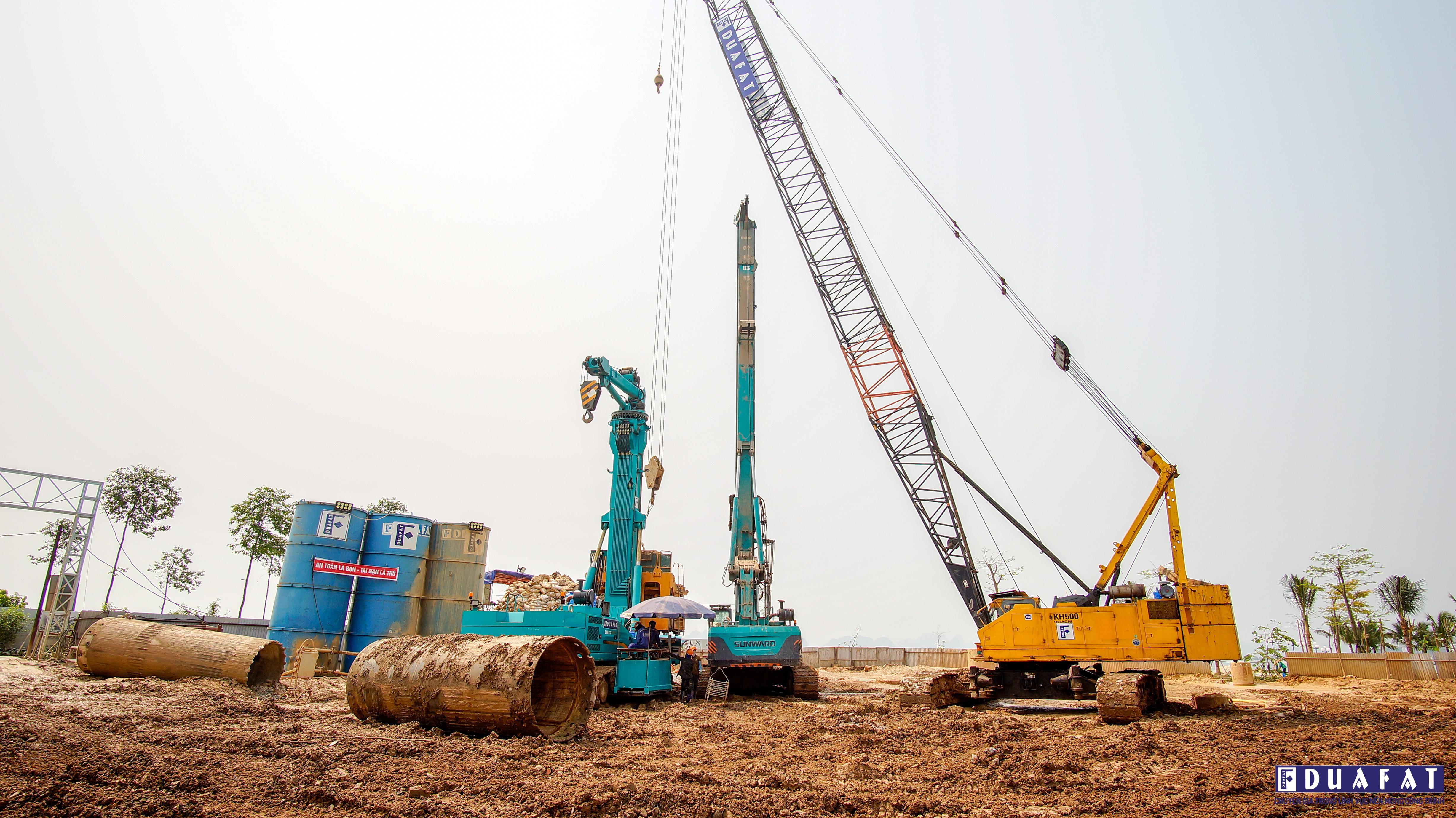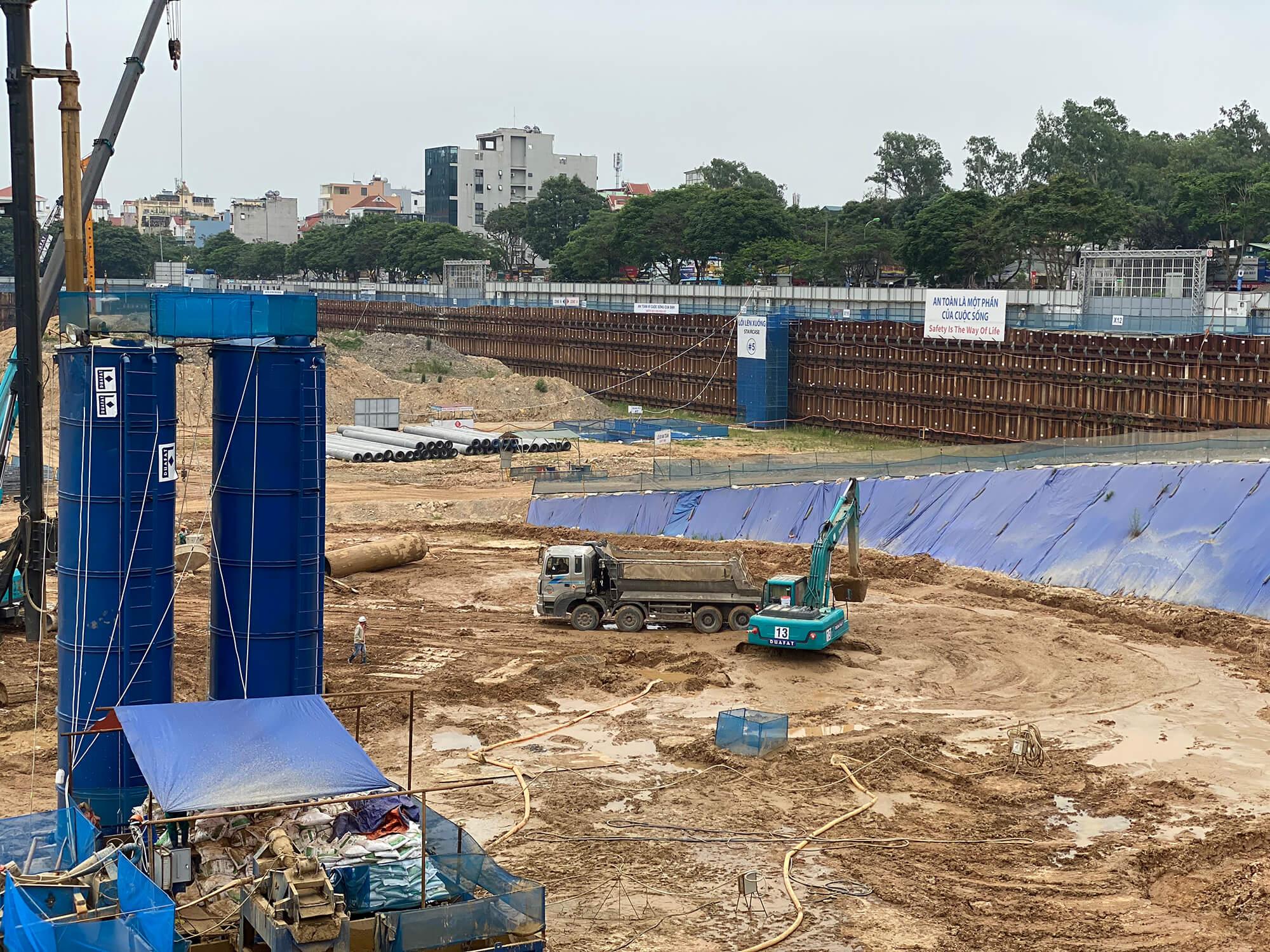Solution of ground treatment is always the first concern in construction to ensure sustainability, minimize damage and save costs. A perfect building will depend on conditions such as: building features, ground characteristics … for the designer to provide reasonable ground treatment measures.
According to the Duafat’s engineer:
There are many constructions that subsidence, collapsed when built on soft soil due to ineffective treatment measures, inaccurate assessment of the physical properties of the ground to serve as the basis and propose solutions appropriate foundation treatment. This is really a difficult problem, requiring our engineers to have a close combination between scientific knowledge and practical experience to solve and minimize the problems and failures of the project.

- Measures for treatment of work structure
-Use lightweight materials and lightweight structures to reduce the weight of the building, reducing the static load on the foundation.
-Using a static structure or separating parts of the building with settlement joints to increase the softness of the structure, including the foundation, to reduce the additional stresses arising in the structure when deviation or non-settlement occurs evenly.
-Using reinforced concrete belts increases the resistance to tensile stress when subjected to bending, and can reinforce at locations where large local capacity occurs.
- Foundation treatments
-Change the depth of foundation burial to address settlement and load-bearing capacity of the foundation.
-Changing the size and shape of the foundation will have the effect of directly changing the impact on the ground surface, thus reducing the load bearing and ground deformation.
-Increasing the foundation’s bottom area reduces the pressure exerted on the foundation surface and reduces the settlement of the building. However, with the land with increasing settlement capacity, this measure is not good.
-Change foundation type and foundation hardness to suit engineering geological conditions: Single foundation can be replaced with ice foundation, interfering tape foundation, raft foundation or box foundation; in case of using ice foundation but the deformation is still large, it is necessary to increase the bearing capacity for the foundation; The greater the hardness of the plate foundation, the larger the ice foundation, the small deformation and smaller settlement. It is possible to use measures to increase foundation thickness, increase bearing longitudinal reinforcement, increase the stiffness of the upper structure, and arrange reinforcing ribs when the foundation is large.
- Soft soil treatment
-Some soft ground such as peat soil, soft clay, muddy soil, sandy soil, basalt soil, and technical parameters such as:
Small load capacity: 0.5 – 1kg / cm²
High compressive settlement: a> 0.1 cm² / kg
High void coefficient: e> 1.0
Viscosity: B> 1
Deformation modulus: E <50kg / cm²
Saturation: G> 0.8

- A number of technical treatment methods
-The method of treating the ground with Melaleuca piles and bamboo piles
This is the method of using melaleuca piles to make the piles drive deep into the ground foundation, widely used, half the cost compared to concrete piles, suitable with small buildings under 5 floors, narrow terrain
– Reinforced concrete pile foundation method
Concrete pile foundations are very effective with modern buildings often used for foundation reinforcement works from low-rise buildings to high-rise buildings. Fast piling foundation construction time 2-3 days to complete for low-rise projects. All high-rise buildings use reinforced concrete pile foundations
-Treatment method with sand piles
This is a mechanical method, also a pile but somewhat different from treatment with concrete piles, melaleuca piles, bamboo, wood, … The piles play the role of direct transmission from works above to the ground floor. Belongs to the foundation structure. The ground will be constructed with a network of sand core piles. This product is used for the construction of soft ground with a thickness of 3m or more. Porosity will be improved by compacting of the sand piles. The ground layer can be stabilized, settlement and inclination are reduced.
-Absorbent wick method
Treatment method with absorbent wick with temporary loading. This means embankment of the original ground above the design thickness of 2 – 3m in a few months. Then, take that load away at the point that the roadbed reaches the final settlement as in the case of the unladen embankment. The wick-wick method can be used independently, but in cases where the rate of consolidation is required, a combination of other treatments can be used at the same time.
-Pre-compression method
This method can be used to deal with soft ground such as peat, clay mud, plastic clay mixed with water saturation.
-Raised foundation method
Raised nails are also known as comprehensive foundations. This is a shallow foundation, mainly used on soft ground, weak foundation resistance even without or without water or due to the structural requirements underneath which are basements, warehouses or toilets, tanks or pool. This type of foundation is often used in tall buildings with high-impact structures. This is a safe foundation, which is used a lot because it is a safe and highly effective method for evenly distributing weight, avoiding subsidence. Should combine soil reinforcement with piles from tram or bamboo to ensure the ground is stable first. The raft foundation consists of a thin layer of concrete, the foundation spreads under the entire construction, the foundation beam.
A basic raft foundation must have all of the following elements according to the technical standards of the construction industry:
– Concrete floor lining.
– Reinforced concrete foundation slabs
– Reinforced concrete foundation beams

Reporter of DUAFAT’s PR team


 VN
VN CN
CN KR
KR JP
JP